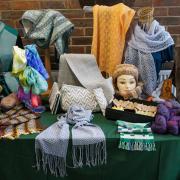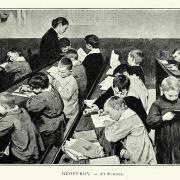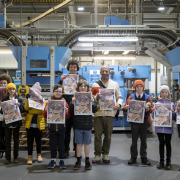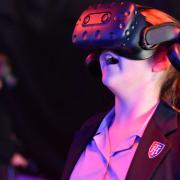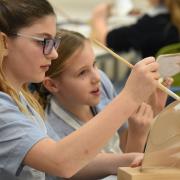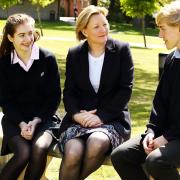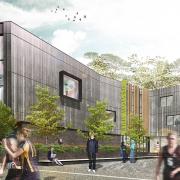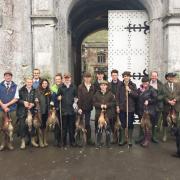The use of technology in schools has opened up a wealth of opportunities for both teachers and pupils.
We speak to Jo Maule, head of e-learning at Talbot Heath independent girls' school in Bournemouth, about how technology has revolutionised teaching and the impact it’s having on pupils’ education.
Q: How has technology changed teaching methods in recent years?
A: Technology has changed teaching immeasurably for the better. Pupils at school today are able to travel the world in an instant using VR headsets to explore locations, as if they were really there. They can travel inside the human body, underwater, and space. The possibilities are endless.

One of the main changes is flexible learning. Teachers at Talbot Heath can now quickly and easily share documents via internet-sharing systems like AirDrop on iPads, and vice-versa for pupils to submit their work. Teachers can then mark-up work online using their Apple Pencil, and students can showcase their work instantly by sharing their screen, all on the go, without being tied to a particular location.
Q: How did the Covid-19 pandemic shape the use of technology in schools?
A: At Talbot Heath, the pandemic proved that 1:1 mobile devices was definitely the right decision for our school, which was implemented a few years prior to lockdown. Lessons could carry on as usual via video conference apps and collaborative working platforms. As those working in industry were already aware, the need to work anywhere is often a necessity, so enabling teachers and pupils to have access to a mobile device really made a big difference.
Q: How can technology benefit students' learning?
A: Where do I start! Until recently, many lessons in most schools had barely changed from Victorian times, with the teacher at the front of the class and pupils sitting in rows behind desks. This caused many pupils to switch off and lose interest. Thankfully, lessons are now far more interactive – pupils don’t need to just sit there, copy notes from the board and listen to the teacher talking 'at' them.

The 'hands-on', flipped learning and collaborative approach works so well, improving pupil engagement, respecting the fact that 'one size does not fit all'. Everyone learns in different ways – technology facilitates this and supports a learning style which works well for the student, which leads to better results.
Q: Do you think using technology is necessary to prepare students for the future?
A: Absolutely. Technology is the future, so it is vital that a person's learning experience reflects this and adequately prepares them for what lies ahead. If students are ill-equipped to deal with technology when leaving education, this could massively impact their career prospects and performance in the workplace. Almost every career path requires some use of technology nowadays, and this will only continue to increase in the future.
Q: How is Talbot Heath incorporating technology into the curriculum?
A: Technology is embedded into every subject at Talbot Heath. Pupils are often given autonomy to use whichever app they feel is most appropriate. They are provided with one device with access to a plethora of digital textbooks, a camera, video recorder, microphone and calculator among other tools, which not only saves space in pupils’ school bags, but also opens up their options for studying and working.
Lessons are interdisciplinary and technology is cross-curricular. For example, a traditional essay regarding WW1 can now be accompanied by a video created by pupils reporting from the battlefields, using green screen technology, music composed using GarageBand, interview techniques and digital artwork.
Q: Does the use of technology need to be adapted for different age groups, abilities and learning styles?
A: Absolutely. Again, as there is no such thing as a 'one-size-fits-all' approach to learning, pupils can adapt their devices to suit their own learning requirements. For example, pupils with dyslexia can add a coloured overlay to help them process information, while pupils with a visual or physical impairment can enable text-to-speech technology, increase font size, add a magnifier or connect another device to support use.
Learning styles can be catered for more quickly and easily than ever before. Apple Classroom supports differentiation marvellously. There is no excuse to teach the same content to all pupils now. Pupils are lucky to benefit from the most engaging content and interactive lessons than ever before. The future is exciting!
For more information, visit talbotheath.org or call 01202 761881 for the senior school and 01202 763360 for the junior school.







